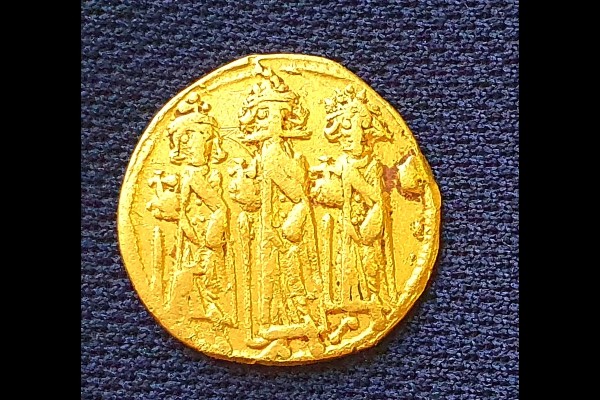The history of Tel Aviv suburb Ramat Hasharon goes back much further than previously thought.
By Pesach Benson, United With Israel
With Ramat HaSharon approaching its centennial year, archaeological evidence indicates the Tel Aviv suburb’s history goes back much further than previously thought.
“The excavation unearthed evidence of agricultural-industrial activity at the site during the Byzantine period – about 1,500 years ago. Among other finds, we discovered a large winepress paved with a mosaic as well as plastered installations and the foundations of a large structure that may have been used as a warehouse or even a farmstead,” said Dr. Yoav Arbel, who directed the excavation on behalf of the Israel Antiquities Authority.
“Inside the buildings and installations, we found many fragments of storage jars and cooking pots that were evidently used by laborers working in the fields here. We also recovered stone mortars and millstones that were used to grind wheat and barley and probably also to crush herbs and medicinal plants. Most of the stone implements are made of basalt from the Golan Heights and Galilee,” Arbel added.
Under Byzantine rule, the Jews of the Holy Land were deprived of autonomy and barred from holding public positions. They were also banned from entering Jerusalem, except on Tisha B’Av, to mourn the destruction of the First and Second Temples.
Ramat HaSharon was founded by a small group of Polish immigrants in 1923 as Moshava Ir Shalom. By 1932, its named had changed to Kfar Ramat HaSharon. Located between Tel Aviv and Herzliya, the municipality now has a population of over 47,000.
One of the rare and unexpected finds retrieved from the excavation was a gold coin, minted in 638 or 639 CE by the Byzantine emperor Heraclius. On one side, the emperor is depicted with his two sons. The opposite side shows a cross on the hill of Golgotha where Christians believe Jesus was crucified.
An interesting addition to the coin is an inscription scratched in Greek, and possibly also in Arabic. According to the IAA, this is probably the name of the coin’s owner, who “marked” it as highly valuable property.
According to Dr. Robert Kool, head of the Israel Antiquities Authority’s Numismatics Department, “The coin encapsulates fascinating data on the decline of Byzantine rule in the country and contemporary historical events, such as the Persian invasion and the emergence of Islam, and provides information on Christian and pagan symbolism and the local population who lived here.”
Another unusual find was a bronze chain that was used to suspend a chandelier containing glass lamp holders.
Installations built at the site after the Muslim conquest in the seventh century CE include a glass-making workshop and a warehouse, where four massive jars were found. Other pottery finds suggested that Ramat HaSharon was inhabited until the 11th century CE, Arbel said.
The excavation was prompted by Ramat HaSharon Municipality plans to establish a new residential neighborhood.
Avi Gruber, Mayor of Ramat Ha-Sharon, said, “I am thrilled by the finds and we have already started working with the directors of the Neve Gan North project on exactly how to integrate the current finds into the future neighborhood. I want all our residents to enjoy learning about life here in antiquity and in the Middle Ages. As we plan heritage-related events for the upcoming centenary, this opens up a whole new perspective on how people once lived in this part of the country.”
